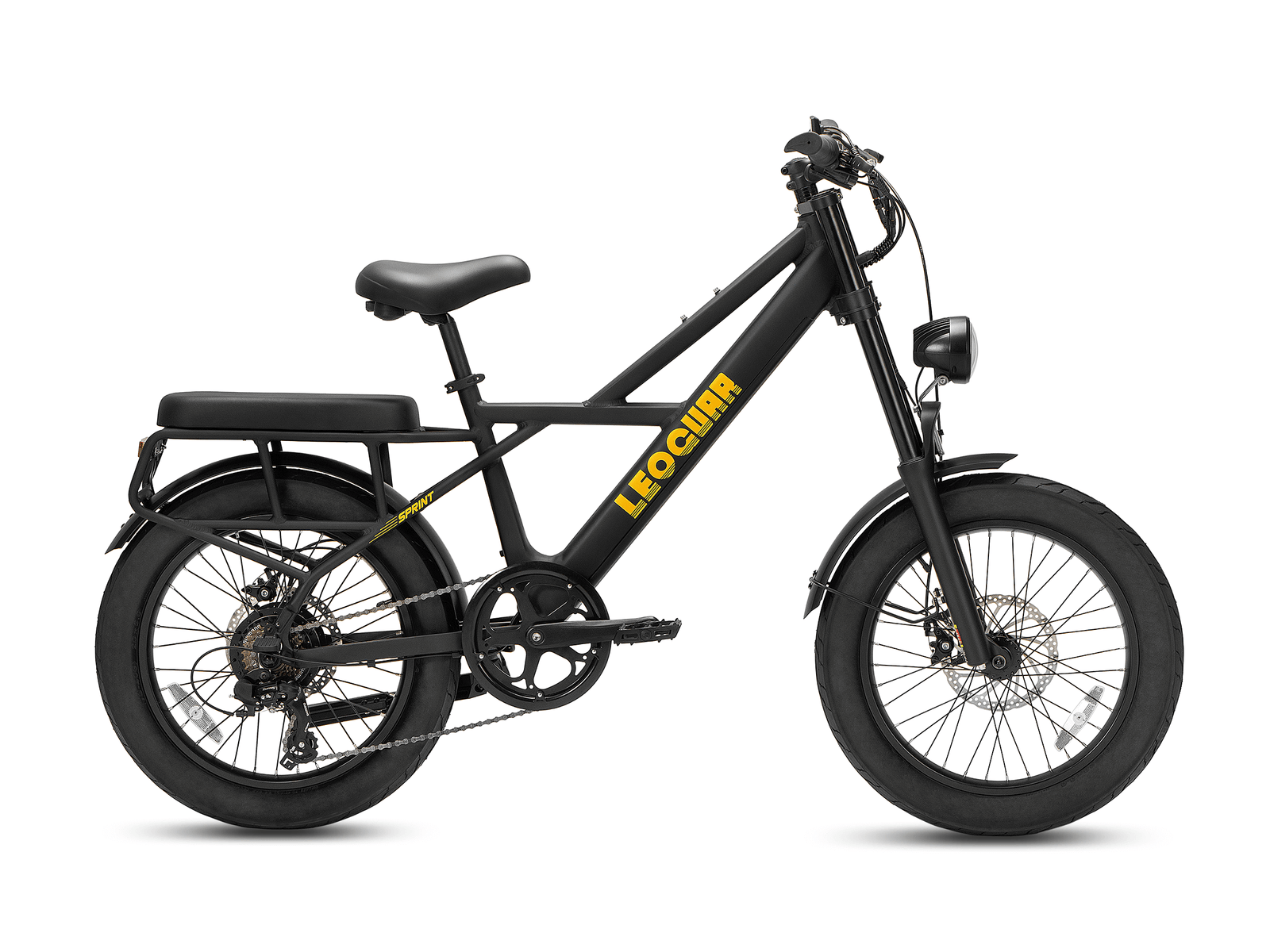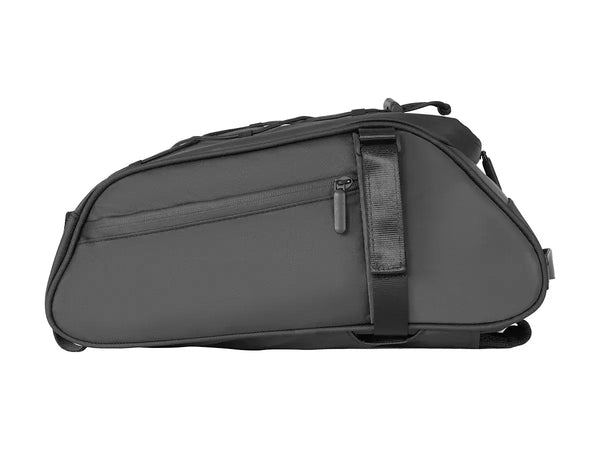
Comfort Cycle Saddle and Saddle Bags for Electric Bike Guide
E-Bike Specific Needs
An electric bike gives you freedom and convenience. But this freedom comes with a challenge: where to store your things. The joy of riding stops when your phone bounces in your pocket or you have no space for tools and a jacket.
This guide solves that problem. We will show you how to choose, fit, and use a saddle bag on your e-bike. From checking if it works with your battery to keeping things dry, this is your complete guide to better rides. An e-bike is not just a regular bike with a motor. Its special design needs a smarter way to add accessories. You might think any saddle bag will work, but e-bikes have special challenges. Ignoring these can lead to frustration, bad purchases, or damage to your bike. We have seen many riders make these mistakes, and knowing why helps you get it right.
The E-Bike Difference
- Battery and Wiring Problems: Many e-bikes have batteries on the back or wires under the seat. A regular saddle bag might not fit around these parts, or it could damage electrical connections over time.
- Frame Shape and Suspension: E-bike frames are often wider and stronger to handle extra weight. This, plus parts like suspension seatposts found on bikes with a comfort cycle saddle, can reduce space between the seat and rear tire, making many larger bags impossible to use.
- Higher Speeds and Shaking: E-bikes let you go faster with less work. In our tests, bags with simple velcro straps start to sway at speeds above 15-20 mph. This movement is distracting and can cause straps to loosen, making the bag sag onto the tire or fall off completely.
- Weight Balance: Your e-bike already has heavy parts like the motor and battery. Adding several pounds in a saddle bag, which sits high behind the rear wheel, can hurt how the ebike handles. This can make the front feel light and the rear feel slow, especially when turning or climbing hills.

Decoding Saddle Bag Types
Saddle bags come in many sizes. Choosing the right one depends on what you need. We have broken them into four main types to help you find the perfect one for your e-bike.
A Comparative Look
| Type | Typical Capacity | Best For | Key E-Bike Consideration |
|---|---|---|---|
| Micro Bags | Under 0.5L | The minimalist rider carrying only a spare tube, tire levers, and a small multi-tool. | Almost always compatible, but check for interference with suspension seatpost mechanisms. |
| Small-to-Medium Bags | 0.5L-1.5L | The sweet spot for most daily riders. Holds essentials plus a phone, wallet, keys, and a snack. | This is where fit becomes critical. You must measure clearance and check for battery obstructions. |
| Large Capacity Bags | 5L-10L | Commuters carrying a change of clothes or riders on a light, single-day tour. | Stability is paramount. Look for bags with rigid mounts or multiple stabilization straps to prevent sway at speed. |
| Bikepacking Seat Packs | 10L+ | Multi-day touring and bikepacking. | Significantly impacts handling and range. A 10-15 lb loaded pack can reduce battery range by 5-10% and requires a very secure mounting system. Not recommended for casual use. |
The E-Bike Fit Factor
This is the most important part. A bag that looks perfect online might not work with your e-bike. Taking time to measure and check your bike before buying will save you time, money, and frustration. We call this the 4-Step Fit Check.
The 4-Step Fit Check
- Step 1: Measure Your Space. Use a tape measure to find the distance from your seat rails (the metal bars under the seat) to the top of your rear tire or fender. Small-to-medium bags need at least 6 inches of space, while large bags can need 9 inches or more. Write this number down-it is your most important measurement.
- Step 2: Check for Blocks. Look under your seat and along the seatpost for things that might be in the way. Is there a battery mounted on the back, or thick bundles of wires for the motor or tail light? We have seen bags that seemed to fit perfectly but were blocked by a battery's charging port.
- Step 3: Check the Attachment System. Saddle bags use two main types of attachments: soft velcro straps or hard mounting brackets. Velcro works with many seatpost sizes but can sway more, while hard mounts clamp to seat rails and offer better stability at ebike speeds but are less forgiving if you have limited space. You can learn more about how different attachment systems perform to see which works best for you.
- Step 4: Think About Your Seat Type. A wide, cushioned comfort cycle saddle is great for comfort but can make bag mounting harder. These seats often have shorter rail sections and their wider shape can interfere with some bags.
The Comfort Triangle
Real riding comfort is more than just a soft seat. It is a complete system we call the "Comfort Triangle"-how your seat, bag, and body work together. A bad saddle bag can ruin the benefits of a good comfort cycle saddle, turning a nice ride into an annoying one.
How Your Bag Affects Comfort
- Avoiding Thigh Rub: This is the most common comfort problem with saddle bags. A bag that is too wide or sways side to side will rub against your inner thighs with every pedal stroke, causing painful irritation over a few miles.
- Protecting Your Comfort Cycle Saddle: You bought a good seat for a reason. Rough velcro straps or a bad-fitting mount can scratch and damage your seat's material over time, so make sure the attachment system is clean and fits properly.
- Keeping Adjustability: Being able to fine-tune your seat position is important for comfort. A bulky saddle bag can block access to the seatpost clamp, making adjustments impossible without removing the bag first, and can also limit how far you can move your seat forward or back. According to professional bike fitter insights, proper position is often more important for comfort than padding alone.
Waterproofing and Protection
Nothing ruins a ride faster than finding your phone, wallet, or spare clothes are soaked. When it comes to weather protection for saddle bags, you need to understand what manufacturers mean by their terms.
Keeping Your Gear Dry
- Water-Resistant vs. Waterproof: Water-resistant usually means the fabric has a coating and the zippers may be covered, which works for light spray or brief showers. Waterproof means higher protection with sealed seams and closures designed to block heavy rain.
- The Roll-Top Advantage: For the best waterproofing, look for bags with roll-top closures like dry bags. Rolling the top down several times and clipping it shut creates a seal that keeps water out completely, making it the best choice for all-weather riders.
- DIY Weatherproofing: If you already own a bag that is not waterproof, you do not need to buy a new one. The easiest solution is to pack sensitive items in a small dry bag or plastic bag before putting them in the saddle bag, or buy an external rain cover that stretches over the bag.

Packing Like a Pro
How you pack your saddle bag is as important as which bag you choose. Bad packing can cause instability and make it hard to reach your gear when you need it.
Smart Packing Strategies
- Heavy Items Low and Forward: Put your heaviest items like tools, CO2 cartridges, or locks at the bottom of the bag and close to the seatpost. This lowers the center of gravity and reduces swaying.
- Often-Used Items on Top: Things you might need quickly during rides, like your phone, wallet, or energy bars, should be packed last so they are at the top when you open the bag.
- Compress and Stop Rattling: Use the bag's compression straps to tighten the load and prevent items from moving around. For a quieter ride, pack soft items like rain jackets or gloves around hard items to stop them from rattling over bumps-a noise that is especially noticeable on quiet e-bikes.
Your Perfect Storage Solution
Choosing the right saddle bag for your electric bike means balancing your storage needs with your machine's special requirements. By focusing on compatibility with your e-bike's frame and battery, ensuring a stable fit, and considering the impact on your comfort cycle saddle, you can avoid common problems. The right bag is not just an accessory-it is a tool that makes your ride better, letting you carry what you need with confidence and convenience. Now you have the knowledge to select the perfect saddle bag and unlock the full potential of your e-bike adventures.
FAQ
1. Q: Can I use any saddle bag on my electric bike?
A: No, not all saddle bags work with e-bikes. You need to check for battery and wiring interference, measure clearance space, and ensure the attachment system can handle higher speeds and vibrations that come with electric bikes.
2. Q: How much clearance do I need between my saddle and rear tire for a saddle bag?
A: Small-to-medium bags typically need at least 6 inches of clearance, while large capacity bags can require 9 inches or more. Measure from your saddle rails to the top of your rear tire or fender to determine what size bag will fit.
3. Q: Will a saddle bag affect my e-bike's handling and battery range?
A: Yes, especially larger bags. A heavy saddle bag can make the front end feel light and the rear sluggish during turns or climbs. Large loaded packs (10-15 lbs) can also reduce battery range by 5-10% due to the extra weight and changed aerodynamics.
4. Q: What is the difference between water-resistant and waterproof saddle bags?
A: Water-resistant bags have coated fabric and covered zippers that protect against light spray and brief showers. Waterproof bags feature sealed seams and special closures that block sustained heavy rain. Roll-top closures offer the best waterproof protection.
5. Q: How do I prevent my saddle bag from swaying at higher e-bike speeds?
A: Choose bags with rigid mounting brackets instead of velcro straps, pack heavy items low and close to the seatpost, use compression straps to secure the load, and avoid overloading the bag. Bags with multiple stabilization straps also help prevent sway at speeds above 15-20 mph.









































Leave a comment